ACRYLIC PAINTING DEMONSTRATION
Rick Matear
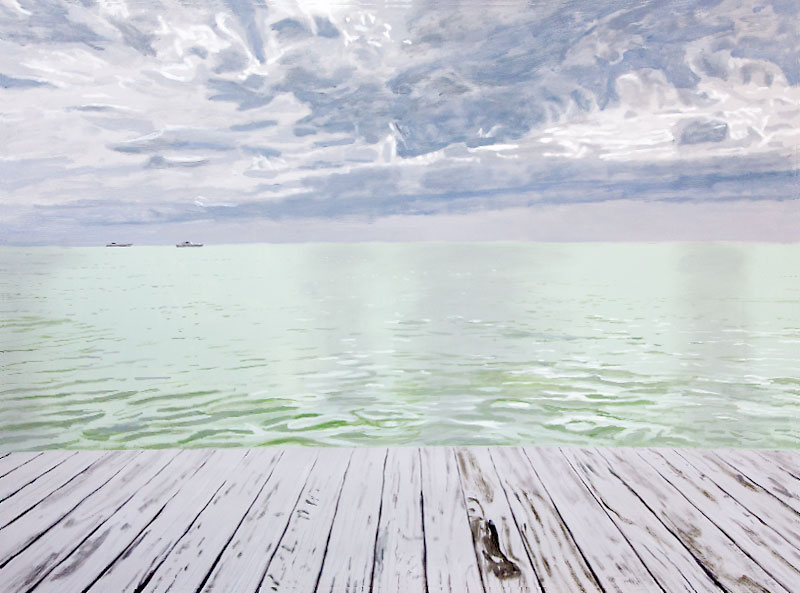
Rick Matear is a very experienced artist and teacher who works in acrylics, oils and watercolour.
Rick is particularly known for his compelling depictions of Mornington Peninsula seascapes. Looking at his luminous paintings, you wonder how on earth he manages to capture the complex patterns formed by the light and reflections that play across the water’s moving, rippled surface. His demonstration provided some insight.
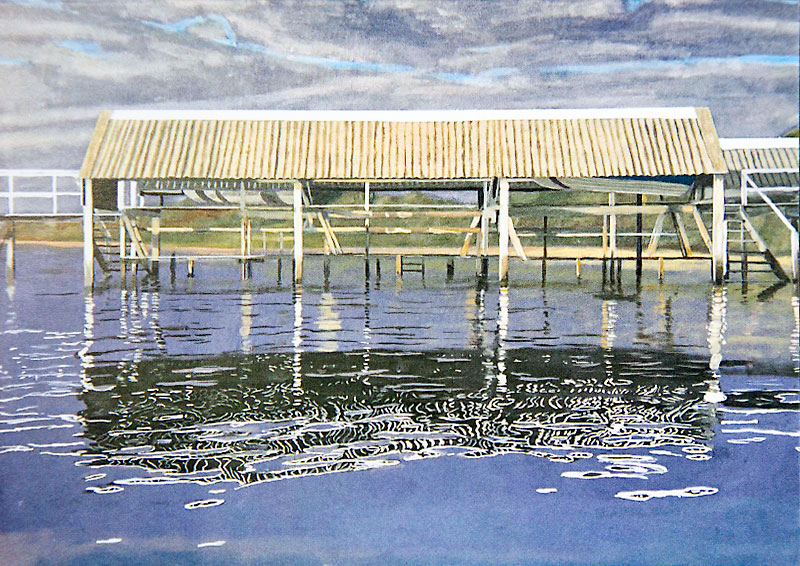
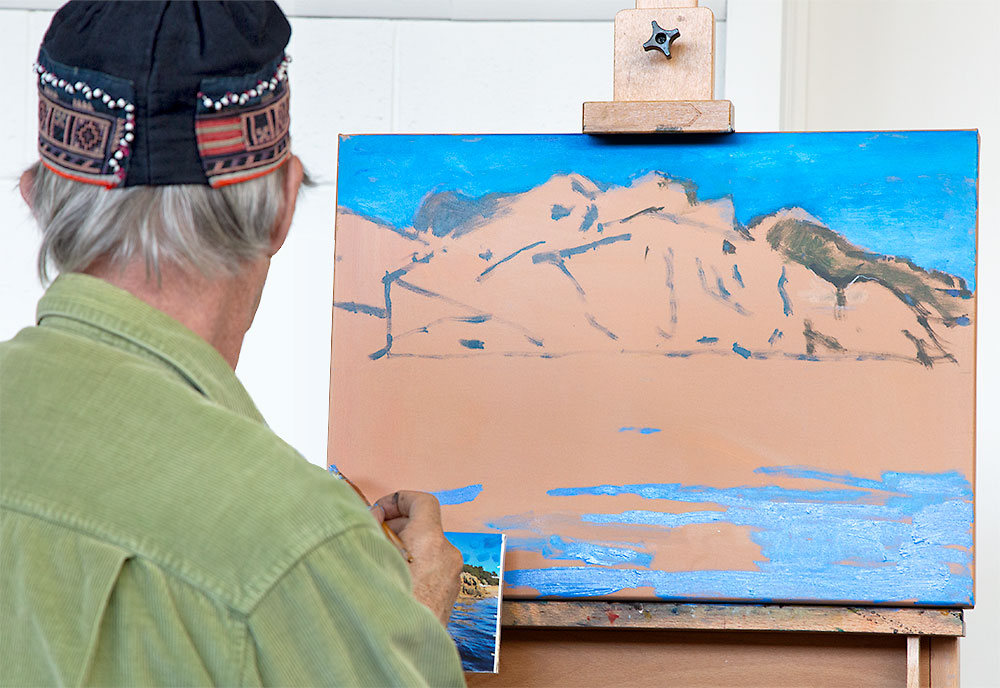
For this demonstration Rick chose to work with acrylics.
Rick spent some time explaining how he gathers reference material and fine-tunes the design of his paintings. He captures his reference photographs in good light, and from many different angles, to maximize compositional options for his paintings.
He doesn’t solely rely on photos though. He always carries a sketch book which is invaluable in refining compositions and working out the optimum range and placement of tones. He maintains that if a composition works as a sketch, it is likely to work as a painting. He finds that drawing with his non-dominant hand results in looser more expressive sketches.
To enhance the impact of his main subject, he generally simplifies what he sees, and what the camera captures. For example he will remove bollards on a pier; a tree that unbalances a composition; any distracting rubbish.
Rick began his demo painting by sketching, with brush and dark paint, an outline of the cliffs onto a canvas pre-coated with a warm light brownish underlayer. He tends to use round brushes for most of his work.
He worked closely from his photographic reference, which was protected with a clear plastic cover so that he could dab reference dots onto it. He placed faint corresponding dots on the canvas and used these to ensure accurate placement of shapes, lines and colours within the composition.
As he mixed his colours on the palette, he dabbed multiple colour samples onto the reference photo to check their accuracy. It took several dabs to gauge just the right shade of blue for the sky.
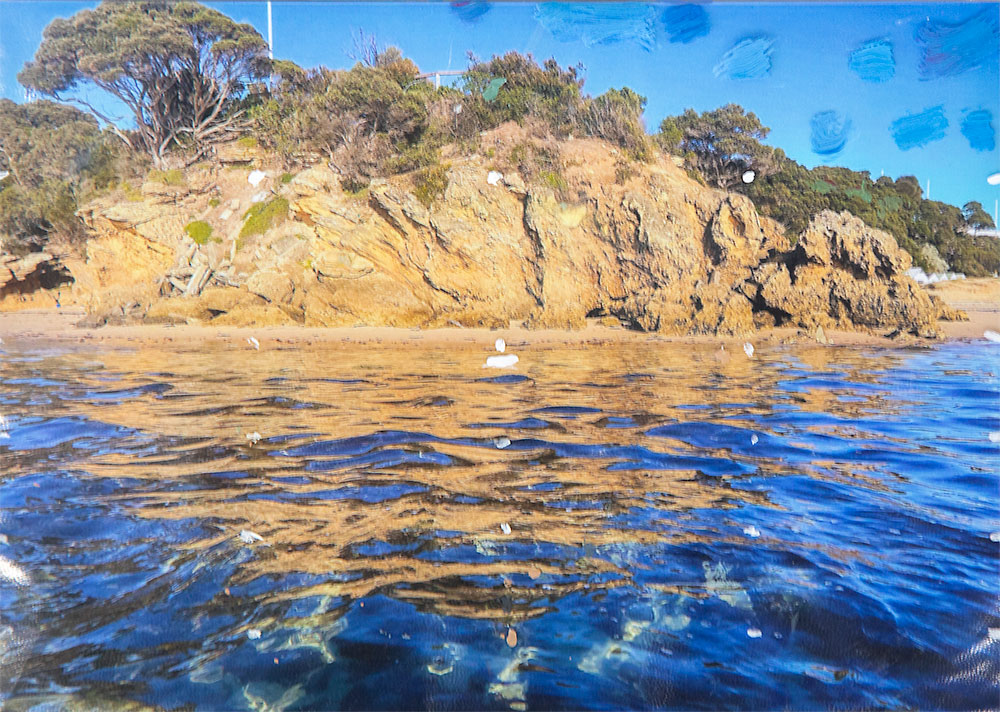
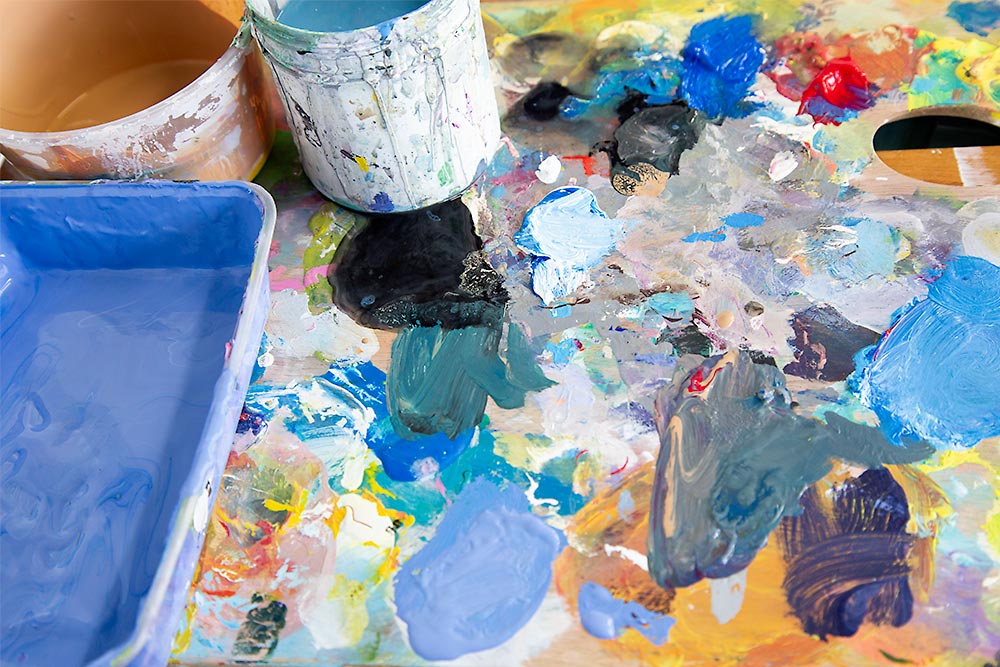
He began building up the patterns in the water shape by shape, like a jigsaw, carefully placing the bigger pale blue shapes of the water first, then slowly and accurately adding darker and darker shapes. Again, he used dots of paint as reference points. As these darker layers slowly built up, an impression of rippled water began to emerge and the negative space of the brownish underlayer began to create the cliff reflections before Rick had added even a dab of paint in these areas.
Sometimes, Rick says, he tends to ‘’lose his place’’ in the complexity of shapes he is attempting to copy. If this happens, he starts working on a different area, then comes back later with fresh eyes to renew work on the previous area.
This was a slow and meticulous painting process, though fascinating to watch. Rick was unable to complete the work in the time available but says he will send us a photo of the finished work. Watch this space!
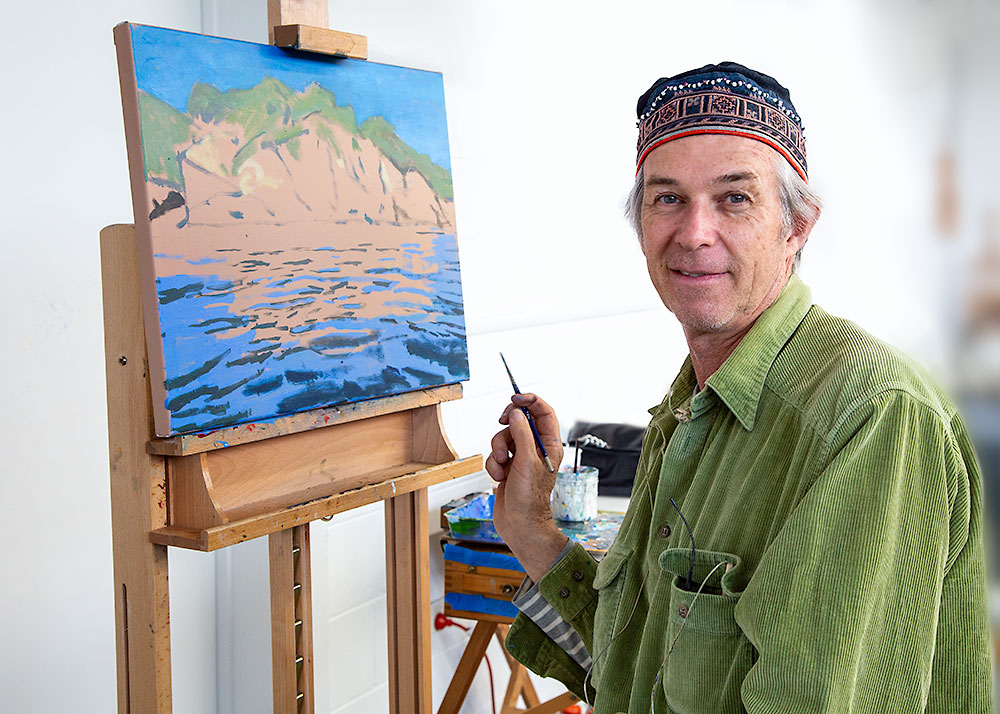
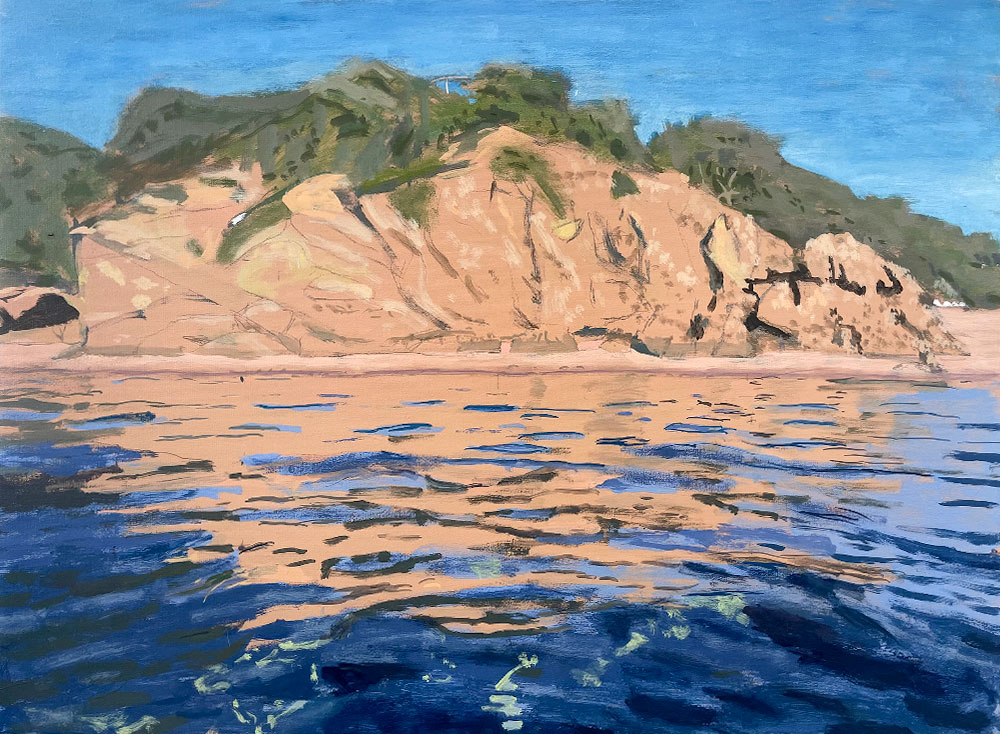
”Nearly finished” acrylic painting by Rick Matear

 Su Fishpool
Su Fishpool Elizabeth Hickeyl
Elizabeth Hickeyl